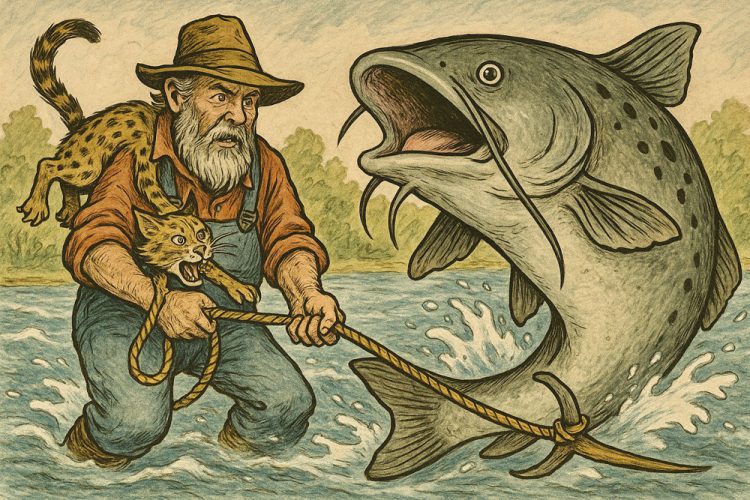Page From the Past: Ozark Whoppers
Long before social media carried tales of record-breaking catfish, one man was writing down the tall ones passed from front porches to potluck suppers across the Arkansas Ozarks. That man was Vance Randolph, a folklorist who spent much of the 20th century chronicling the oral traditions, superstitions and songs of rural mountain folk. And yes—he collected plenty of fish stories along the way.
In his 1951 book “We Always Lie to Strangers: Tall Tales from the Ozarks,” Randolph captured the kind of catfish exaggerations that could only be born in the backwoods and sharpened over years of retelling. One such yarn, from Benton County, begins with an impossibly large hook and an even more improbable bait:
“They still tell the tale of the Sugar Creek catfish in Benton County, Arkansas,” Randolph wrote, “but the details have been built up a little. Such stories generally get bigger, as they pass from one crossroads audience to another. When I last heard this one, near the statue of the flat-bottomed angel on the old Pea Ridge battlefield, the fisherman was using a hand-forged hook that weighed twenty-seven pounds, with a forty-pound live wildcat for bait.”
And if catfish weren’t already fierce enough in Arkansas folklore, one old-timer from St. Joe added predator status to their legend:
“Will Rice of St. Joe, Arkansas always told the tourists that the Buffalo River used to be full of big alligators,” Randolph reported, “but that none have been seen there in recent years. When somebody wondered about the cause of the reptiles’ disappearance, Rice declared that it ain’t safe for alligators in Searcy County waters nowadays. The catfish would eat ‘em up, he said.”
Another tale, this one from Bella Vista, tells of a monstrous fish so powerful and ornery it became the bane of local fishermen. It snapped lines, shrugged off spears and even drowned a man who tied a noodle line to his wrist.
“In the summer of 1928 the fat man resolved to catch this catfish or perish in the attempt. He got the blacksmith to forge a hook three feet long and used the well-rope for a line, with two sash-weights by way of sinkers. Baiting with a full-grown groundhog, he tied the rope to the top of a stout elm and lowered the hook into the depths of Sugar Creek.”
By dawn the next day, the tree was uprooted—roots in the air—and all that remained of the fish was, supposedly, a piece of its anatomy:
“I pulled on the line, slow an’ careful,” the man told Randolph. “There was a heavy weight on the other end… I didn’t git the fish. But I did git about 75 pounds of his upper lip.”
Vance Randolph didn’t just document folk tales—he preserved a cultural way of life that celebrated exaggeration, humor, and the thrill of a fish story well told. Thanks to him, generations of catfish anglers can enjoy these Ozark whoppers, knowing that somewhere out there, maybe… just maybe… a groundhog-baited catfish still lurks in Sugar Creek.



